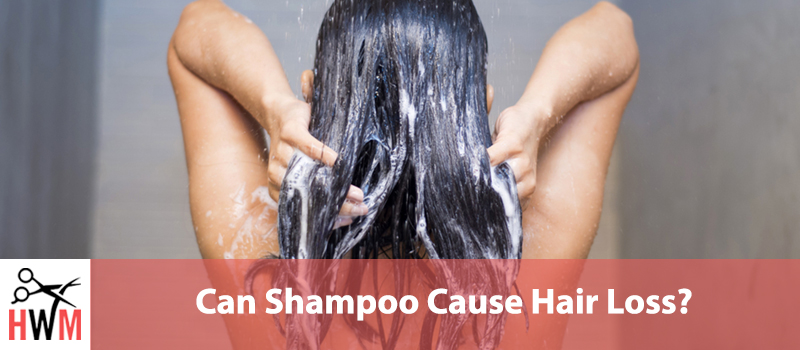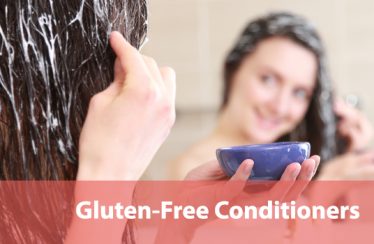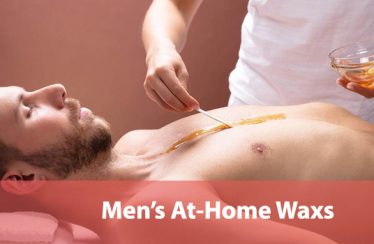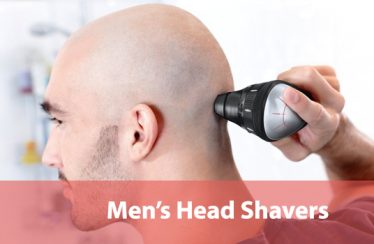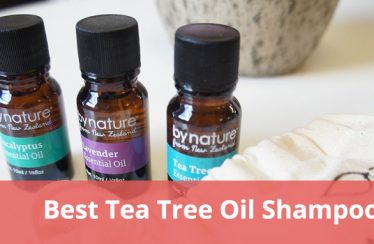Anytime you notice a little extra hair going down the drain it’s worrisome. Having good hair is a sign of health, most people think it makes you more attractive, and it’s a sign of youth.
So, any signs of hair thinning, or going delicate and breakable, can be distressing. We want to get to the root of the problem and do everything in our power to keep our hair and make it strong and vibrant.
Of course, since most people shampoo several times a week, if not every day, our shampoo is often one of the first things we think of that might be a problem.
Can your shampoo cause hair loss? Well, it depends. Some shampoos are harder on your hair and scalp than others, and how you use your shampoo is important too, but there are some myths about shampooing and hair loss that are important to understand to get the full picture.
- Shampoo and Your Hair
- Myths About Shampoo and Your Hair
- Ingredients You Should Avoid
- How to Get the Most from Your Shampoo
- Use Warm Water, not Cold
Shampoo and Your Hair
For starters, it’s unlikely that simple shampooing too often is going to cause hair loss. All shampoo is supposed to do is lift dirt and oil from your hair and scalp and cleanse the surfaces of your hair and skin. Cleansing works to clear your pores and hair follicles of dirt and bacteria, a net benefit to your hair.
Massaging the shampoo through your hair and over your scalp is also good for your hair. Massage opens the capillaries in the scalp and encourages additional blood flow. Boosting the circulation in your scalp brings more nutrients and oxygen to your hair follicles, improving their overall health. As a result, the hair growing on your scalp will be made from thicker, stronger, more well-nourished cells.
While hair that’s visible is made up of dead cells, being healthier while it’s in the follicle and growing will help each strand stay strong and healthy-looking much longer.
Ultimately the basic function of shampoo is really good for your hair and scalp. However, there are lots of ingredients in shampoo that do more than simply cleanse your hair. Not all those ingredients are bad, and some are necessary to make a shelf-stable product that we can ship and store easily, but all of them have some effect on the shampoo and how it interacts with your skin and hair.
While shampoo is generally good for your hair, it is possible for shampoo to dry out your hair or scalp, cause damage, and make your hair more vulnerable to breakage and falling out.
Myths About Shampoo and Your Hair
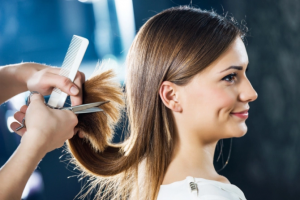
There are some common myths about shampoo that we should dispel before talking about how to get the most out of your shampoo and conditioner. A lot of these are common ideas that you’ve probably already heard before, so let’s set the record straight so you can concentrate on the differences that matter between shampoo.
Myth # 1: Your Hair Stops Responding to Shampoo You Use for Too Long
You’ve probably been told that it’s a good idea to change the shampoo formulation or brand you use from time to time in order to keep getting the same benefits from your wash.
There are some good reasons for you to occasionally change the shampoo you use, but none of them are that your hair has become resistant to the cleansers to somehow immune to the effect of the shampoo.
If you notice your shampoo isn’t working as well as it used to, chances are something other than shampoo has changed.
One exception is if the shampoo formula itself has changed. Fortunately, most manufacturers do announce when they make a formula change since doing so can boost their sales, but they don’t always. It’s a good idea to check online if you notice differences in the shampoo itself not just your hair.
You may need to change shampoo seasonally since the weather and air affect your hair and you may need different properties in your shampoo as a result. You may also need to switch when you move, for the same reason.
Hormonal changes as you age, take medication, or change lifestyle and dietary habits also have big effects on your hair and might mean you need to change shampoo.
The other big reason to change shampoo is that you notice it’s leaving a filmy-buildup on your hair that isn’t from your conditioner, which can be a sign that the shampoo isn’t washing completely away as it should.
The best way to test this is to skip the conditioner and let your hair dry at least once. You should still use a leave-in conditioner after you’ve checked your dried hair, however, to avoid it getting damaged.
Myth # 2: If You Don’t Wash Your Hair It’ll Clean Itself
This one is closely connected to the NoPoo movement where people stop using traditional shampoos entirely in favor of washing with backing soda solutions, vinegar rinses, or just water.
While NoPoo can have benefits for some people, it simply isn’t true that your hair will clean itself or maintain that freshly-cleaned look without some form of a cleansing wash or rinse.
The NoPoo movement works by helping your scalp stop over-producing greasy oils, something it only does if it’s being irritated and dried out by your routine, or exposure to something in your shampoo or the environment. By eliminating shampoo, you can eliminate one source of exposure to irritants, which is why some people get great results using the NoPoo baking soda or vinegar wash method.
Myth # 3: Frequent Shampooing Always Dries and Damages Your Hair
We’re going to be talking a lot about shampooing drying and damaging your hair, yes, even the point of causing hair loss and thinning, so it’s important to address this first.
There is nothing about shampooing that inherently makes it dry out or damage your hair. We already talked about how shampooing is really good for your hair and scalp, and that’s true. However, the wrong shampoo, or a shampoo with a lot of harmful ingredients, can cause problems.
Naturally, if you have a shampoo that dries or damages your hair, using it more often will cause more of a problem than using it only a couple of times a week.
Now, shampoo can strip your hair, opening the hair cuticle and leaving it feeling rough and dry which is why it’s important to use a conditioner to smooth and restore the hair shaft. That isn’t necessarily damaging. In a good shampoo, it’s just a part of the cleansing process.
For most people, it’s a great idea to use another moisturizing product like a leave-in conditioner as well, since it adds another layer of protection over your hair.
Ingredients You Should Avoid
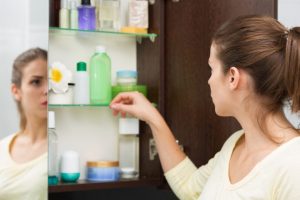
We mentioned that there are ingredients in most shampoos that don’t have anything to do with cleansing your hair. Some of the ingredients are used to make the final product shelf-stable so you don’t have to refrigerate it, others help it foam up, add scent, add color, or make it easier to ship and store safely for long periods of time.
It’s difficult to find a shampoo that doesn’t include any of the ingredients on this list since using at least some of them is important to keep your shampoo safe and easy to use. Instead of trying to eliminate all of them, look for shampoos with fewer of the ingredients on this list, and further down the list of ingredients.
Every component of your shampoo is on the ingredient list in order of what percentage it makes of the final formulation. The closer to the top it is, the more of it is included. If your shampoo has a potentially damaging ingredient it should be at least 4-5 ingredients from the top of the list.
Sulfates:
Sulfates are included in most shampoos because they help the shampoo create those thick bubbles and lather you want when you wash.
The two most common sulfates you’ll find are sodium lauryl sulfate and ammonium lauryl sulfate. These can also be listed as SLS and ALS.
Unfortunately, while sulfates help your shampoo feel good to apply and wash through your hair, they are a potential irritant even at low concentrations. Cheap shampoo brands tend to have a lot of sulfates to improve the texture and foam of the shampoo, well above the concentration that has been shown irritating.
There aren’t human studies on the effect of sulfates on human hair follicles, which would be the best test of sulfates as a cause of hair loss. However, studies have been done on rats, showing the sulfates caused hair follicle damage and hair loss for them.
Sodium Chloride and Ammonia Chloride:
Chances are your shampoo has sodium chloride (table salt) as a thickener if it has a large amount of sodium lauryl sulfate, or ammonia chloride if it uses ammonium lauryl sulfate. Neither of these additives are toxic, after all, you probably eat plenty of table salt every day.
However, they can be irritating in too high a concentration and are drying for your hair just like they would be for your skin. They can also be behind that itchy feeling some shampoo leaves you with.
Formaldehyde:
Formaldehyde and other preservatives are important in keeping your shampoo shelf-stable. Pretty much every shampoo that doesn’t need to be refrigerated will have some preservative or another.
Formaldehyde is also antibiotic, further helping to keep your shampoo safe.
However, high concentrations of formaldehyde can cause DNA damage, including in the cells on your scalp. It really does have to be high concentrations, the first several layers of cells in your skin are already dead, so the damage caused by formaldehyde and other preservatives won’t affect them. It’s only when you get past those dead layers to skin and follicle cells that are actively dividing that it’s a problem.
Once these preservatives have penetrated that far they do cause damage, and can contribute to damaged hair and hair follicles, leading to weaker hair and hair loss.
Quaternium-15 and Parabens also fall into this category. Rather than causing DNA or other cell damage they are thought to interfere with your body’s natural hormones, which can also lead to unhealthy thin hair and hair loss.
Propylene Glycol:
Propylene glycol is used in anti-freeze. It is toxic and can be irritating to your skin and hair.
Again, though, avoiding this chemical altogether is difficult in commercial shampoo because it’s needed to prevent shampoo from freezing as it’s shipped across the country.
Instead of trying to completely avoid propylene glycol in your shampoo you should look to minimize how much is included. The further down the ingredient list the better. Also, since it is highly toxic if ingested, try to keep shampoo out of your eyes and face, including the soapy water when you rinse.
Alcohol:
The science is a little torn on this one. There are many different types of alcohol and many of them occur naturally in plants and your body, so just the presence of alcohol itself doesn’t mean that your shampoo is drying or damaging.
However, as anyone who’s washed with rubbing alcohol can tell you, some varieties of alcohol are very drying.
Some dermatologists and doctors recommend avoiding alcohol as much as possible in your shampoo and skin products. Others say that alcohols beginning with S and C, like Stearyl and Cetyl Alcohol, can be good for your hair.
Stearyl, Cetyl, and Cetearyl alcohol are common in shampoo. It’s up to you how much of these alcohols you’re willing to have in your shampoo, but like the other ingredients on this list, we recommend looking for shampoos with as little as possible.
Some Oils:
Some oils are great to include in your shampoo. A lot of brands advertise plant-based oils like shea, argon, and avocado oil. These ingredients are a way to add moisturizing oils to the shampoo without weighing it down too much.
However, many shampoos also include mineral oil, lanolin, and petroleum-based oils. We’ll even give a pass to lanolin if you have coarse strand hair or curly hair since a lot of men have great results with lanolin for controlling thicker hair types.
Mineral oil and petroleum, however, weigh down your hair too much. While they won’t cause damage on their own, they can exacerbate the appearance of hair loss, damage, and thinning.
Fragrances and Color:
Fragrances and colors are fine for most men, but if you suspect that you’re struggling with sensitive skin or hair it’s a good idea to avoid heavy fragrances and lots of colors since they can be sources of irritation.
Especially in cheaper shampoo brands, the heavy floral, fruity, or musky fragrance in your shampoo isn’t likely to be natural. It’s a chemical or combination of chemical additives that create the pleasant scent and color.
It’s not that those chemicals are irritating or toxic on their own, but they are one more ingredient that you might be having a negative reaction to. If you’re concerned, try switching to a non-scented brand, and avoid artificial colors, just get a sample or travel size if you can, if switching doesn’t help it’s probably not the scent and color that are the problem.
How to Get the Most from Your Shampoo
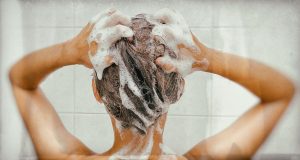
Once you’ve picked a good shampoo option and minimized the potentially damaging ingredients, it’s still important to use your shampoo and other hair products properly to make sure you’re getting good results and protecting your hair.
Take Your Time:
It’s hard to fit extra time into your busy modern schedule, we’re all running from task to task most of the day, but if you’re worried about the health of your hair it’s important to find a little extra time to take care of it.
Scalp massage is one of the best things you can do to combat hair loss and hair thinning. Since it increases circulation and brings more oxygen and nutrients to your scalp it has an overall beneficial effect.
One of the easiest ways to incorporate more scalp massage in your daily routine is to take some extra time when you’re shampooing your hair.
In addition to giving you the beneficial effects of the massage, taking the extra time will also help you thoroughly cleanse your hair and scalp, eliminating any dirt and debris that may have made their way into your hair follicles or pores.
Try Shaking Up Your Routine:
You probably have a schedule for when you shower through the week or through the day. Showering might be part of your morning or evening routines or something you do once every couple of days.
The right grooming schedule is different for everyone. Everybody is different and of course, the products you use and your routine have an impact on your hair’s appearance and health. If you’re concerned about your hair a simple first step is to change your routine for a week or two and see if that helps.
Try a routine that’s significantly different from what you’re doing now. Maybe waiting a few extra days will give extra life and body to your hair, or washing every day will help eliminate the natural dirt and grease on your scalp and let your hair grow free and well.
Remember, give it at least a week to work. You can always go back to your old routine if the change doesn’t make a difference.
Avoid 2 in 1 Shampoo and Conditioner Products
Shampoo and Conditioner 2 in 1s can seem like a great way to save time and money. However, shampoo is meant to wash completely out of your hair, while conditioners are designed to protect your hair and do leave some residue between washes.
No 2 in 1 formulation can control exactly what gets left in and on your hair and what washes away, so while you might be getting the conditioning and moisturizing effect of the conditioner, you’re likely also keeping the cleansers and other ingredients on your hair longer than they should be.
Product build-up can be challenging with many shampoos, but 2 in 1 formulas are particularly notorious for leaving more on your hair than they should and leaving it limp and stringing looking to boot.
Use a Leave-in Conditioner
In addition to using regular shampoo and conditioner, it can help to add a leave-in conditioner on top of your other products, especially if your hair is more than 2-3 inches long. This gives you another layer of protection and hair-smoothing power and can help prevent problems like split ends and breakage.
Breakage makes your hair look frizzy. If it gets bad enough it can also mimic the appearance of hair loss, even when your hair growth and hair follicles are fine.
Use Warm Water, not Cold
Rinsing with cold water at the end of your shower is often touted as a way to make your hair smoother and shinier, closing the cuticle and smoothing each hair strand, much like cold water can tighten and close your pores.
If you’re using a good conditioner you don’t need anything else to smooth each hair strand. The cold water might not damage your hair, but it does discourage blood flow to your scalp.
If you really want to finish with a cold rinse, especially to help wake up in the morning, go ahead. Just avoid getting the cold water directly on your scalp.
Conclusion
Shampooing your hair is good for both your hair and scalp, but the type of shampoo you use can cause damage if it has too many drying or irritating ingredients added. Buying a high-quality shampoo is important to make sure you’re getting good results and protecting your hair.
It’s a good idea to occasionally change products if your hair needs change, but even if your shampoo is causing damage, there are products out there that are gentler for you to use. Things like seasonal changes, age, and medication can all alter how your shampoo affects your hair.
By sticking to high-quality shampoo and conditioner you can go a long way toward keeping your hair happy and healthy. If you’re still struggling with hair loss, it’s a good idea to go to a doctor or a dermatologist to get more answers.
